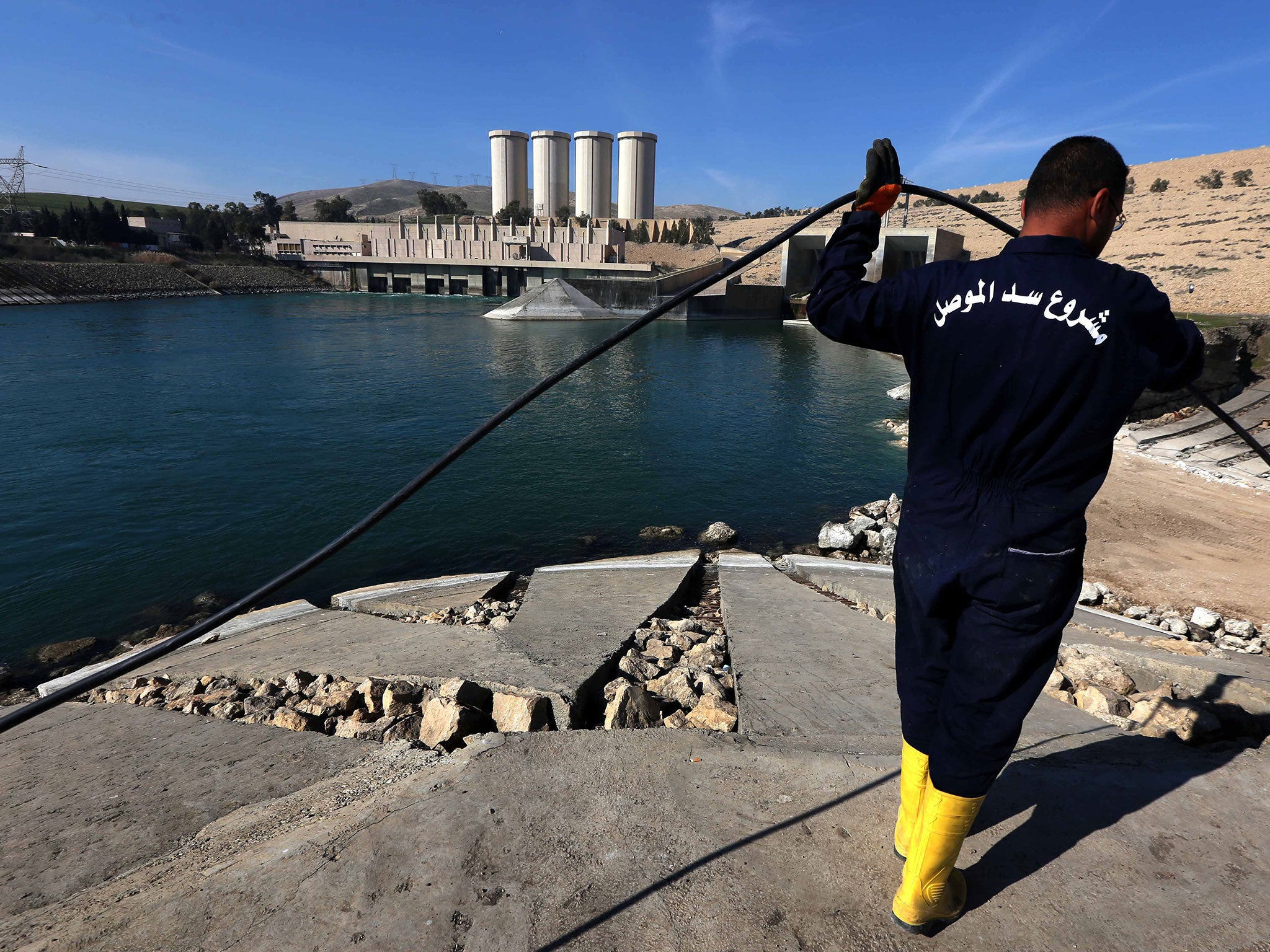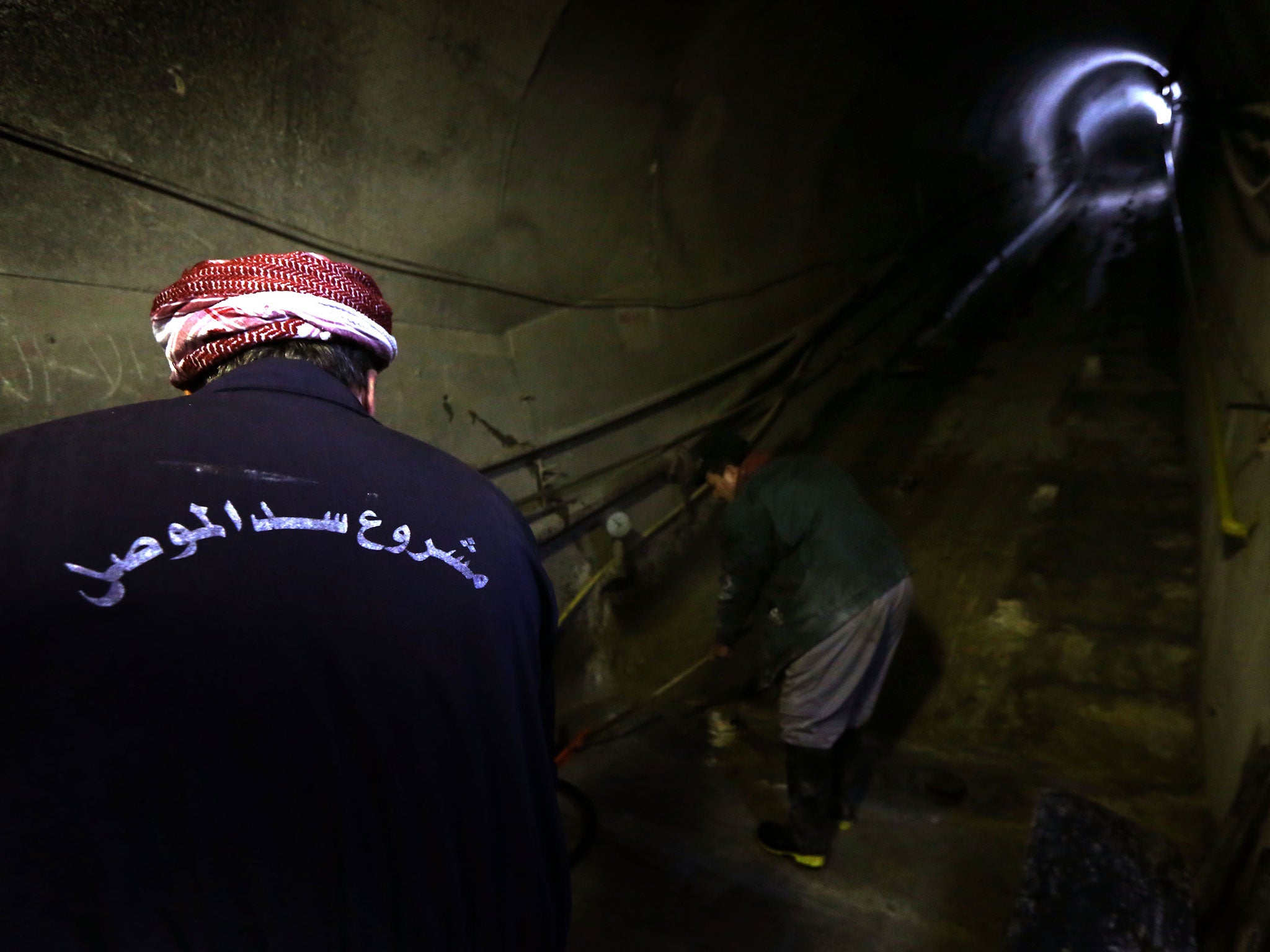If the Mosul dam in Iraq collapses, half a million people could die
Mosul, about 25 miles north-east, would be hit by a 65-foot wall of water and wiped out within four hours if the dam failed

If breached, it could unleash a 180-foot high wave down the Tigris River basin, drown more than half a million people, with floodwaters reaching as far as the Iraqi capital, 340 miles to the south.
The collapse of Mosul Dam would be catastrophic for Iraq.
The dam has been called the most dangerous in the world for the past decade. But recent assessments by the US Army Engineers Corps say it is at "significantly higher risk"” of failing than previously thought.
The dam’s structural problems became evident as soon as the reservoir behind it was filled in 1985. It is built on layers of clay and gypsum, a soft mineral that dissolves when it comes into contact with water, and the dam immediately began seeping. Since then, around 100,000 tons of grouting has been poured into the structure to prevent it from collapsing.
However, even this stop-gap measure has been disrupted by Isis, which briefly seized the dam in the summer of 2014 – the militants still hold the nearby city of Mosul, their defacto capital in Iraq. Political wrangling and a financial crisis in Iraq are also complicating repair work.
The hydroelectric dam almost certainly has an "unprecedented level of untreated voids" in its foundation, according to the US Army Engineers Corps’ January 30 report, which was made pubic this week when it was submitted to the Iraqi parliament. The monitoring team has identified "significant signs of distress," it added.

When Isis took control of the dam, a rigid daily routine of pouring grout into the structure to stop it collapsing was missed for six weeks, while logistical issues have plagued the process ever since.
Meanwhile, a government decision to deprive Isis-held Mosul of electrity by blocking the flow of water put additional pressure on the dam as water levels rose.
Top-level US officials have voiced their growing concerns to the Iraqi government, an adviser to the prime minister’s office said. They have regularly invoked Hurricane Katrina, but warned that the devastation could be "a thousand times worse," the adviser said, speaking on the condition of anonymity because he’s not an official spokesman.
If the dam fails when water levels are high, the flooding would be disastrous. Mosul, about 25 miles north-east, would be hit by a 65-foot wall of water and wiped out within four hours, studies have said. Further downstream, Tikrit is expected to be deluged in 50 feet of water before the torrent bursts another dam at Samarra. Within 48 hours, floods 13-feet deep would reach Baghdad.
Concerns are becoming more acute as Iraqi security forces prepare for an offensive to recapture Mosul from Isis, the adviser said. In recent days, units from the Iraqi army’s 16th division have arrived in Makhmour, southeast of Mosul, in order to begin operations in the area, commanders have said.
The adviser said Iraqi security officials are worried that militants may try to sabotage the dam if they think they have lost the city and have drawn up emergency plans. Meanwhile, the use of heavy munitions could put additional pressure on the structure, he said.
"We had to give a warning to these operations to observe the dam, but there shouldn’t be anything nearby," said Shirouk al-Abayachi, co-chair of the Iraqi parliament’s agriculture and water committee. The situation still remains "very dangerous," she said.
"We don’t have anything that tells us what’s going on under the dam," she said. "There are sinkholes, but we don’t know how big they are now."
Iraq’s Ministry of Water Resources has played down the threat but was persuaded to reopen the lower gates of the dam to relieve some pressure, even though it meant power was restored to the militant-held city farther south.
The Italian company Trevi recently won a bid to repair the dam and is expected to sign the contract soon. The cost is estimated to be more than $300 million, the adviser said, adding that the expense will likely be covered by the World Bank. But the repair bill comes as Iraq is desperately seeking financial assistance as oil prices hover around $30 a barrel.
Iraq’s water minister, Mohsin al-Shammari, who is politically aligned with the anti-American cleric Moqtada al-Sadr, has dismissed US warnings, saying in an interview with an Iraqi television channel that there is only a “one in a thousand” chance of the dam failing. He has criticized the predictions as an excuse for more foreign troops to be sent to the country, as Italy has said it will send 450 soldiers to provide security for the Italian firm.
Prime Minister Haider al-Abadi has stressed the need for the work to begin quickly. Melting snow and more rains are expected to increase pressure on the dam this spring.
Copyright: Washington Post
Join our commenting forum
Join thought-provoking conversations, follow other Independent readers and see their replies
Comments
Bookmark popover
Removed from bookmarks